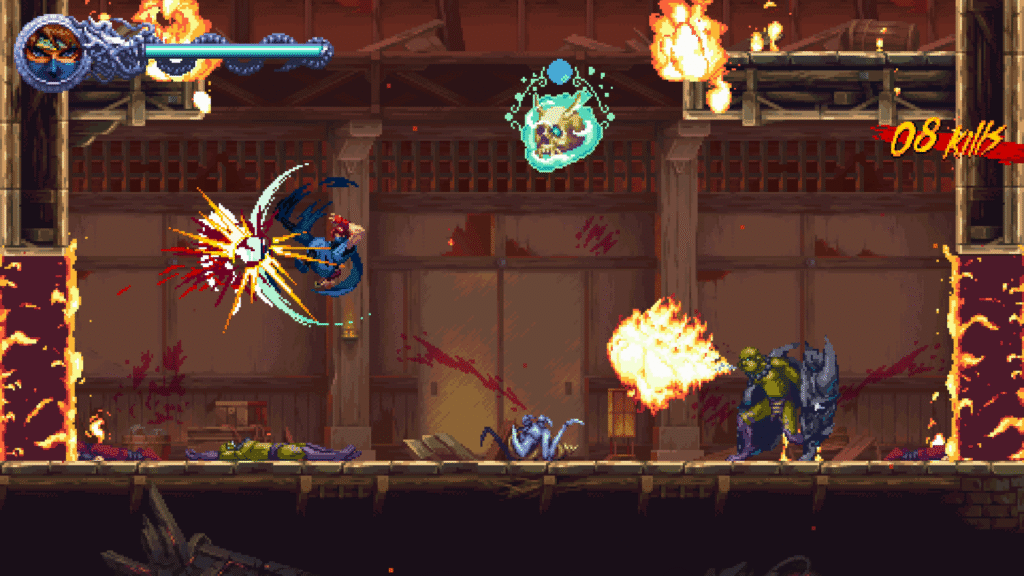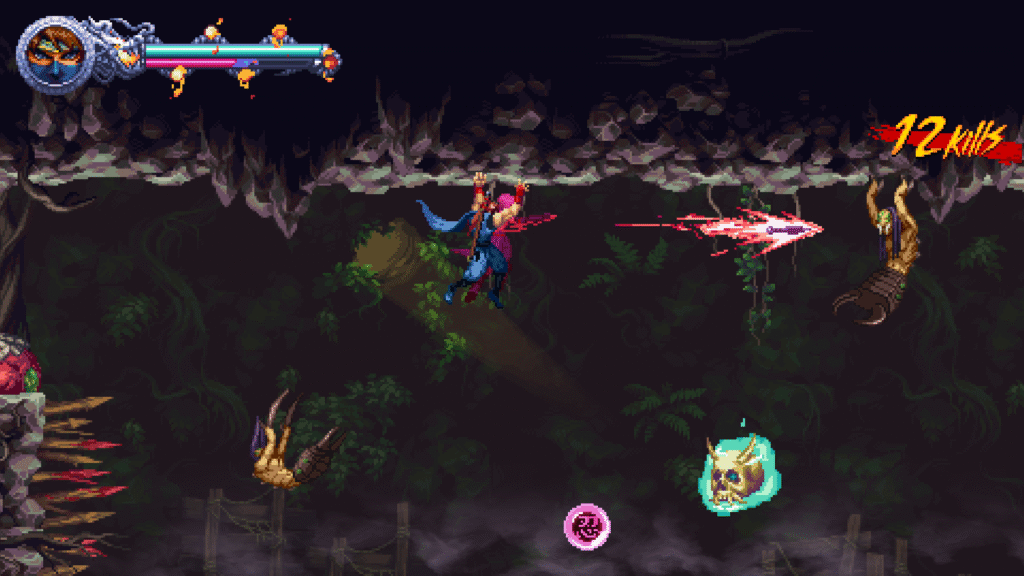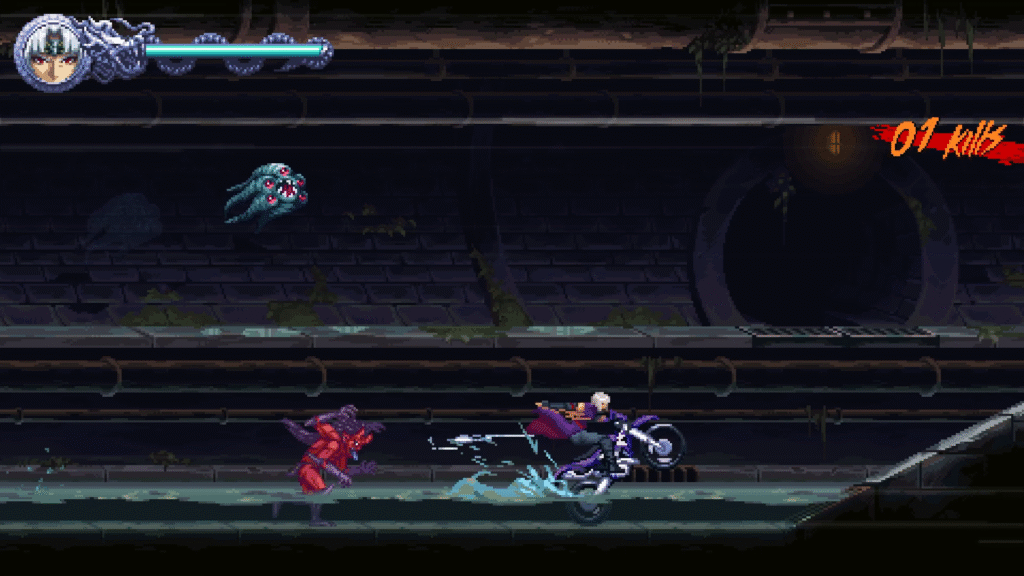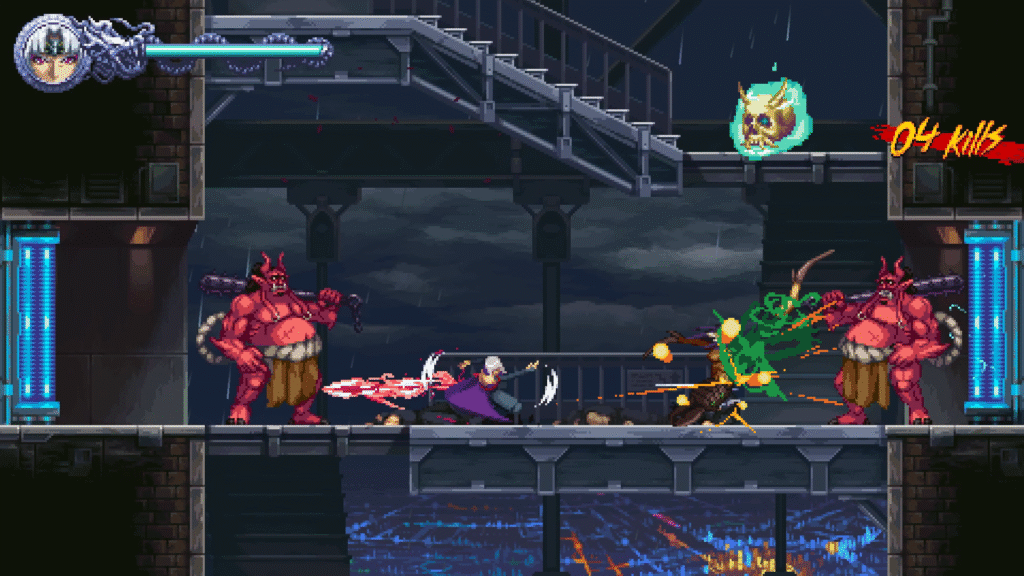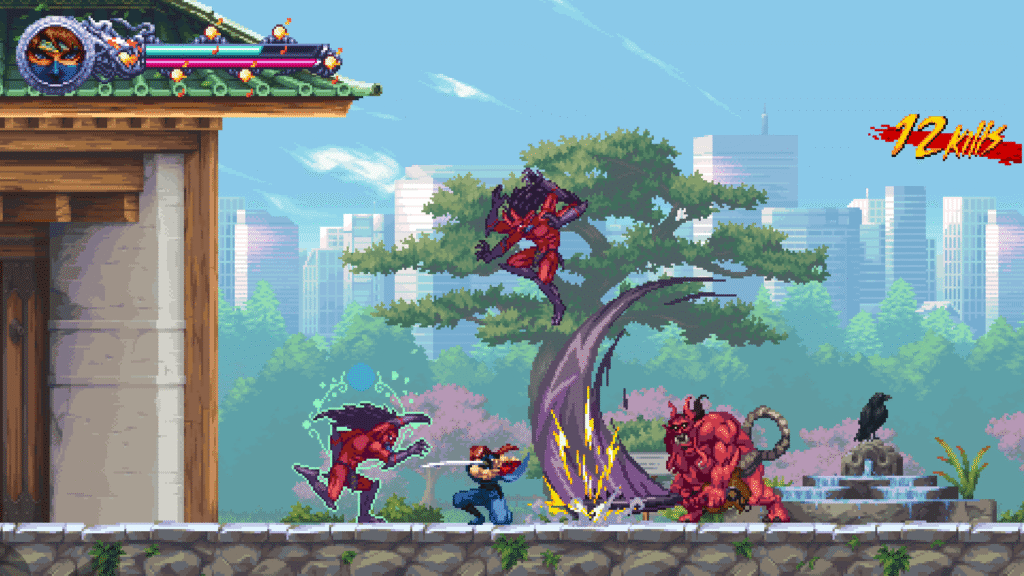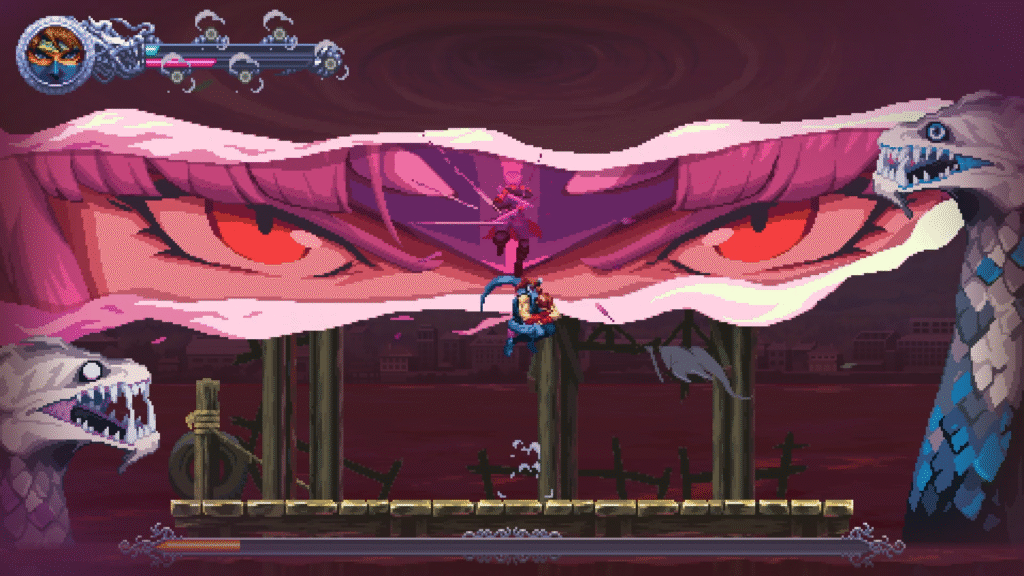The Game Kitchen, best known for developing Blasphemous and Blasphemous 2, a team that is a perfect fit for NINJA GAIDEN: Ragebound. The developers excel at retro visuals that have a mood, and a movement system that feels deliberate with controls being precise. This extends to NINJA GAIDEN: Ragebound, where everything coalesces beautifully, and while it isn’t impactful as the developers prior games, provides a soulful entry that’s a joy to play. NINJA GAIDEN: Ragebound sees the series return to the 2D plane to be a bloody exciting ninja adventure that’s not to be missed.
The game starts with introducing its players. Now, even though Ryu Hyabusa is there, you don’t play as him like you would expect. Instead, the game places you in the jika-tabis of Kenji Mozu take on the threats that befall Hyabusa Village. You meet Kumori who is skilled with the kunai, of the Black Spider Clan. Normally enemies, but the two find themselves caught and needing to work together. In fact, fate literally entwines the two for a unique dual character system.
This is a bit of a slow burn, because it’s not until Act 3 where the game really begins. While it takes things to move along, this isn’t a short game for the genre. It’ll take you around seven hours to see the main story to its completion. But with ratings, collectibles, and more, you’ll be spending a lot more time here across its several acts.
You’ll play through stages, and since the name of the game is combat, you’ll encounter a whole host of them. Now, most enemies are a one-hit kill if you can attack them the moment they get on-screen. Larger enemies are understandably not one-hit, and can be taken down in several swipes. Some enemies will be highlighted by a special symbol, attacking them will earn you a hypercharge, a super ability that can kill any enemy that’s not a boss in one hit. Not all enemies you have to fight, and you can also avoid combat. But the game will display a counter of how many enemies you’ve killed consecutively, and this’ll contribute to an overall ranking when the level is over.
There is some light puzzle solving, which mostly involves using Kumori to open areas that were inaccessible for Kenji. Both characters can climb walls, hang from ceilings as they move across dangerous areas, and even double jump. While hanging, you can still attack. And the double jump makes it so you can avoid projectiles and utilize respawning enemies as a way to cross areas you can’t simply jump over.
While the levels themselves aren’t that interesting, it’s the action that takes place inside of them that are the most fun. Levels span from villages to jungles to city complex, and often look and feel repetitive. While I should have expected it, there’s a surprise motorcycle level that didn’t feel like you’re on rails as you would in other games. There’s a need to push back enemies, be aware of obstacles, and fighting off enemies to maintain that kill combo. Later in the game, as you’re tasked with a story elements that lets you play levels in any order. It doesn’t matter how or in what order, so this little bit of freedom of choice is refreshing.
Along the way you will come across checkpoints. There’s not a lives system, so no matter if it’s a tough section or a boss, you can endlessly replay from that point until you get past it. It’s worth noting that checkpoints are emphemeral, so if you quit to the game, you will have to restart the level over. In all other instances, this is a classic type of game with the challenge of the NES / SNES era. This is furthered by the fact that the original game’s composers Keiji Yamagishi, Ryuichi Niita and Kaori Nakabai have helped Blasphemous composer Sergio de Prado make Ragebound‘s soundtrack a nostalgic yet modern musical journey.
Ninja Gaiden favorite shopkeeper Muramasa is here. His shop is filled with talismans and secret blessings. The talismans can make things easier like restoring health at checkpoints or increasing melee damage when health is low. They can also make things harder, like death making you restart the whole level over instead of at a checkpoint. It’s an interesting system that due to the lack of difficulty, can help you fine tune it to your liking.
There’s a healthy amount of collectibles to find. The most common one is golden scarabs, which serve as the currency to shop at Muramasa’s. All of the collectibles add up with challenges, time taken, kills made, and combo achieved for your overall rating. While it shows ‘S’ as the top rank, it is possible to get ‘S++’ for the perfectionists. Doing this well can unlock a series of secret levels to play and even earn achievements for. This is a game chock full of things to uncover if you look hard enough.
While the game is gorgeous and fluid in 180fps, it only supports 1080p resolution, which means it doesn’t support ultrawide. This still looked really good on my 1440p ultrawide monitor, it helped solidify the retro aesthetic. There is an optional CRT filter that can be enabled. It’s nice, but includes a CRT curve in addition to the scanlines. It would’ve been nice if you could enable the CRT filter without the curve, as it doesn’t look right on a slightly curved ultrawide. All to say though, this is a game that runs flawlessly on a Stream Deck, and no one should have any issues playing this to its maximum.
My PC Specs:
– Linux (6.15.6-2-cachyos)
– Intel Core i9 13900K @ 5.8GHz
– ASUS ROG RYUJIN II 360 ARGB AIO Liquid CPU Cooler
– G.SKILL TRIDENT Z5 6000MHZ 64GB (32×2) DDR5 RAM
– ASUS ROG Strix GeForce RTX 4080 16GB GDDR6X
– WD_BLACK SN850X M.2 (4 TB)
– LG UltraGear 34GP950B-G (21:9 Ultrawide @ 3440×1440)
The Game Kitchen really cooked here, because this looks and feels like a classic Ninja Gaiden game, but with way more going on. The sublime controls and gorgeous pixel art will cement the notion that “Ninja Gaiden is back!” While I don’t love the levels themselves, the game’s combat is a vehicle that takes you from place to place that you won’t be bothered by it. NINJA GAIDEN: Ragebound takes the series back to its roots, even rivaling its modern 3D counterparts with ease.
A Steam code was provided in advance by the publisher for review purposes

